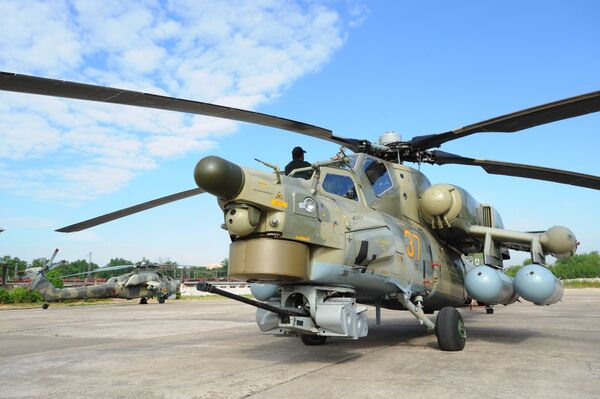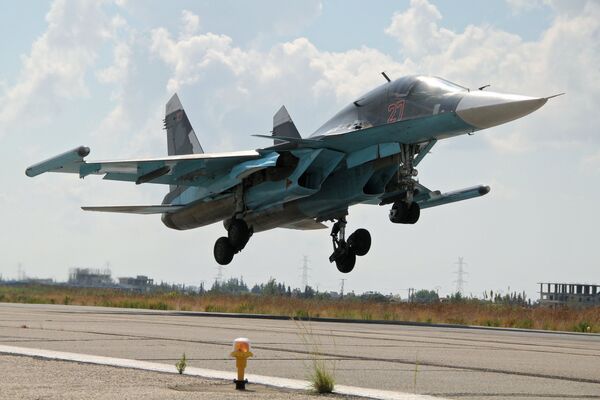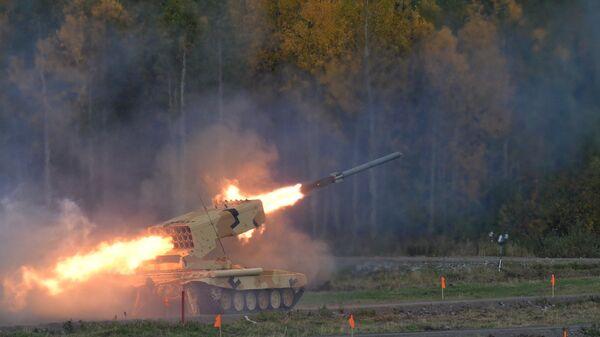Traditionally, any kind of weapon in Russia, including a tank, a pistol or an aircraft, is given an official alphabetic or alphanumeric designation.
But in everyday life, the country's designers and the military refer to Russian weaponry by official and unofficial nicknames, something that is also the case with NATO representatives.
In this vein, it is worth pointing to a systemic approach related to the nicknames of some kinds of weapons.
The multiple launch rocket systems, capable of destroying a whole settlement in a minute, are traditionally named in honor of destructive natural phenomena: "Grad" (Hail), "Uragan" (Hurricane),"Smerch" (Twist) and "Tornado."
The names of rivers are typically given to Russian air defense systems, such as "Shilka," "Tunguska," "Dvina," "Neva," "Pechora" and "Angara."
An array of Russian self-propelled and towed artillery systems also gets such nicknames, including "Msta," "Khosta" and "Kama."
Many types of Russian military hardware receive nicknames related to their individual characteristics. It suffices to mention the heaviest Russian intercontinental ballistic missile (ICBM) R-36M2 nicknamed "Voevoda" (Warchief).
@WarfareWW The launch of R-36M2 "Voevoda"(NATO: SS-18 "Satan") ICBM pic.twitter.com/jrG6ODf1r9
— Warfare Worldwide (@WarfareWW) 10 мая 2016 г.
"This 'general of all ICBMs' is capable of delivering as many as 10 combat blocks with a capacity of up to a megaton each to the enemy's territory," according to RIA Novosti expert Andrey Kots.
"The attack helicopter Mi-28 'Night Hunter,' as you might guess, is specifically designed for operating in the dark. As for the high-speed missile torpedo "Shkval" (Squall), it is the absolute record holder in its class in terms of speed," he explained.

According to him, the overwhelming majority of Soviet and Russian weapons were nicknamed in line with the "try to guess what it means" principle.
Certainly, it's hard to understand why the prototype automatic grenade launcher TKB-0134 was nicknamed "Kozlik" (Kid), not to mention the heavy flamethrower system TOS-1 "Buratino" (Pinocchio) and the "Gepard" (Cheetah)-class frigates.

"Separately, we should mention the nicknames of various munitions, which were apparently coined by those with a poetic attitude of mind," Kots pointed out, citing the Grad system's 122 mm missile 9M22K "Ukrasheniye" (Decoration), a 240 mm missile MS-24 with a chemical warhead "Laska" (Сaress) and a 220 mm leaflet shell "Paragraf" (Paragraph).
Also, it is worth mentioning the air target detection station "Fantasmagoria"(Phantasmagoria), the 30 mm air gun "Balerinka" (Small Ballerina) and the Soviet tactical atomic bomb "Natasha."
As far as NATO reporting names are concerned, "an ordinary Russia will certainly scratch his head trying to understand why the strategic Tu-160 bomber is called Blackjack by US media," according to Kots who also referred to the MiG-29 "Fulcrum" fighter and the Ka-25 "Hormone" antisubmarine helicopter.
But strange as it may seem, "NATO's code classification of aircraft and helicopters with the Russian Aerospace Forces is based on a very simple principle," Kots added.

He explained that the first letters of NATO reporting names correspond to the type of Russian warplane or helicopter.
"For example, fighters get nicknames, which have the first letter F," Kots said citing the Su-27 "Flanker" fighter jet, the MiG-31 "Foxhound" supersonic interceptor aircraft and the Su-34 "Fullback" fighter-bomber.
This principle also pertains to Russian bombers, such as the Tu-95 "Bear," the Tu-22 "Blinder" and the Tu-22M "Backfire."

The letter M (miscellaneous) in the NATO classification denotes all other types of Russian aircraft, including reconnaissance, training and long-range radar detection planes.
Russian transport aircraft nicknames start with the letter C (cargo). They include the Il-76 "Candid," the An-124 "Condor" and the An-12 "Cub."
The NATO reporting names for Russian helicopters include the first letter H (helicopter): the Mi-24 "Hind," the Mi-28 "Havoc" and the Mi-26 "Hoodlum."
"With many reporting names picked up by NATO rather aptly, one will certainly wonder why the Su-25 ground attack aircraft is nicknamed 'Frogfoot,'" Kots concluded.









